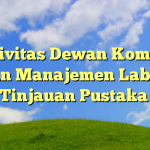What Determines Internal Control Weakness?
An Empirical Analysis Of State-Owned Enterprises
Audited By State Audit Agency
Abstract
A material weakness in internal control is defined as a significant deficiency, or combination of significant deficiencies, that result in more than a remote likelihood that a material misstatement of the annual or interim financial statement will not be prevented or detected. Section 404 of the Sarbanes-Oxley Act (Management Assessment of Internal Controls) stipulates that management of publicly listed firms has to evaluate the effectiveness of their internal controls over financial reporting and disclose the identified material weakness. Numerous articles aim to find empirical evidence of factors influencing weakness of internal control.
In Indonesia, publicly listed firms are yet obliged to disclose their material weakness of internal control. However, BPK (as the state audit agency) report the material weakness of internal control over entities’ financial reporting in their audit report of state-owned enterprises (SOE or BUMN). The report enables us to empirically analyze influencing factors of internal control weakness over BUMN financial reporting.
There are four independent variables to be hypothesized to influence internal control weakness (WEAK): profitability (PROFIT), firm size (SIZE), growth rate (GROWTH), and the presence of complex transaction (COMPTRANS). Additionally, we also employ one control variable (FORM or legal form of SOE: Persero or non-Persero).
Empirical results show that without control variables, only SIZE is significantly associated with WEAK (for univariate and multivariate analysis). However, the direction of effect of SIZE on WEAK (positive) is contradictory with the hypothesized direction (negative). After including control variables, the power of regression equation is slightly increasing. However, still only SIZE significantly affect WEAK with contradictory direction.
Keywords : Internal control, Internals control weakness, state-owned enterprises (SOE)
1. INTRODUCTION
Enron’s accounting scandal (revenue mark-up and hiding liability with the use of off balance sheeet financing) has captured US public attenttion. The fraud eroded investors’ trust to invest in US public firms. This condition leads to the issuance of The Sarbanes-Oxley Act in 2002 to restore public confidence. This act was initiated by Senator Paul Sarbanes (Maryland) dan Representative Michael Oxley (Ohio), and has been ratified by President George W. Bush on July 30 2002. This act was the response of US Conggress on numerous accounting scandals performed by some US big firms which also involves “the big five” accounting firms, such as Arthur Andersen, KPMG, and PWC.
The Sarbanes-Oxley Act (SOX) stipulates publicly listed firms to report their internal control in their financial reporting in order to increase investor confidence, quality of accounting information and corporate governance. At Section 404 (on Management Assessment of Internal Controls), it is asserted that report of company’s internal control should include the responsibility of management to produce and maintain the adequacy of evidence of internal control structure and procedure over financial reporting. Besides, end-of-period assessment should include the effectiveness of internal control structure ( control environment, accounting systems, and control procedure) in financial reporting. Consequently, external auditors are expected to not only audit financial statements (as usually practiced), but also provide assessment on clients’ internal control over financial reporting and management’s performance.
…………………….
Simposium Nasional Akuntansi 11
Download:
#download/12655493/paper2.doc.html



